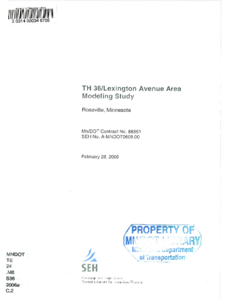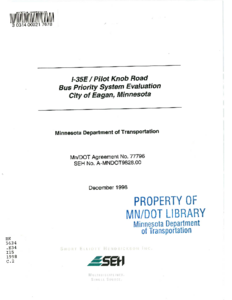Advanced Rural Transportation Information and Coordination (ARTIC) Operational Test Evaluation Report
Date Created
2000-07
Description
Highway 212: Interregional Corridor Management Plan
Date Created
2002-04
Description
Highway 52: Interregional Corridor Management Plan
Date Created
2002-04
Description
Tier 2 air service study: Minnesota in partnership with Wisconsin: Executive Summary
Creator
Date Created
2003-06
Description
Tier 2 air service study: Minnesota in partnership with Wisconsin
Creator
Date Created
2003-06
Description
I-35E/Pilot Knob Road bus priority system evaluation: City of Eagan, Minnesota
Date Created
1998-12
Description
Twin Cities Metro Area Freight Connectors Study: Final Report
Date Created
2006-10
Description










